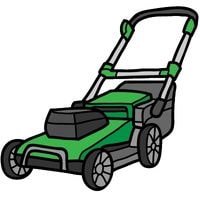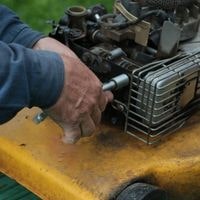Honda lawn mower Troubleshooting. Honda has a unique approach to its gardening equipment. Their engines are known for how easy they are to start, the precision of their twin blade technology, and other quality factors that you can only find in Honda power mowers.
By creating functional lawn equipment based on real customer feedback, Honda is able to understand what customers want from their product and develop a garden tool.
That gives them just that as opposed to thinking about things from an aloof marketing perspective. And folks love how easy it is to get started with fuel-efficient Honda lawnmowers.
Honda lawn mower Troubleshooting
Designing and manufacturing a high-quality product is only part of the equation for success. To ensure that Honda consistently delivers lawn mowers to our customers in a way that makes them feel like they made the right choice in selecting our product.
We have included troubleshooting guides so you will know exactly what to do when something needs repair or attention maintained on your lawnmower.
Honda lawn mower will not start
Inspect the spark plug for signs of wear or damage. If the porcelain insulator is cracked, an electrode is burned away or damaged, or there is heavy carbon buildup at the electrode, replace the spark plug.
To determine if the spark plug is defective, use a spark plug tester while the engine remains running. A strong spark should be visible between the tester’s terminals while checking the outlet over each cylinder in turn and then between each terminal of both terminals.
If you saw no signs of a spark when you tested the firing order then this indicates that the spark plug is defective and should be replaced.
Honda lawn mower leaks gas
If the lawnmower is leaking fuel from the bottom of the tank, it might be time for a new gasket for your carburetor bowl.
If the leak is coming from the bottom of the bowl, you can try unclogging or replacing that seal beforehand; however, if it needs to be replaced then it’s possible that your bowls are worn out and need to be replaced altogether.
Battery keeps dying
If you’ve tried charging the battery but it’s still not holding a charge, your battery may be gone for good. You will need to replace it with a new one.
The alternator provides voltage to the lawnmower while the engine is running, and also recharges the battery. To determine if the alternator is working properly.
Use a multimeter on new batteries (both should have ~12.6V). If both test OK, continue testing all components from there.
Lawnmower blades won’t engage
Lawnmower PTO clutches allow you to manually engage or disengage the engine from the blades within your lawnmower.
The clutch allows you full control of its own speed, as long as it is supplied with power by the solenoid. If it is not getting power (solenoid), or if the clutch has been damaged (or not lubricated sufficiently) in any way, then your lawnmower blades won’t move.
If your PTO clutch needs to be replaced on your mower, you can use a multimeter to test for continuity and determine whether or not that’s where the issue lies.
Honda lawnmowers do not self-propel
The V-belt turns the rotary motion of the engine or motor into linear motion that makes the wheels of the cutter move. If it’s worn out or broken, you’ll be stuck with an immobile mower.
Check these belts regularly for damage to their surface and texture; a belt worn down at its centerline is particularly prone to snapping.
Replacement is one option, but your mower may be able to use a replacement belt if you move it slightly on its side brackets so as to not have all its weight concentrated on the part of the original belt.
(Count on your dealer for this service.) The drive pulley, which connects to the crankshaft running through your mower’s guts, transmits all this energy unto the cutting wheels, whose belt only has half to do with setting them in motion: make sure it isn’t cracked or warped before you chalk up any other problems to defective pulleys.
The Honda lawnmower runs very rough
If the lawnmower engine is running unevenly or not at all, one of the reasons may be a clogged carburetor. Most commonly, this occurs when fuel sits in the lawnmower too long.
some of its ingredients evaporate, leaving behind a thicker substance that can cause clogs in the carburetor. If there’s no sign of engine trouble and everything else appears normal, then first try cleaning out the carburetor with a carburetor cleaner.
If that fails to correct the problem, it’s probably time to tear down and rebuild or replace the entire carburetor.
Burning smell from Honda lawn mower
If the engine of your lawn mower produces black smoke, this is typically an indication that the carburetor is getting too much fuel.
Black smoke could also be a result of an improperly functioning choke (i.e. if it’s stuck in the open position) or a bad float in the carburetor that hasn’t sealed properly.
In addition to getting rich fuel mixture running through your engine, poor air exchange can lead to other issues with your Briggs & Stratton engine as well like for example having water-logged or overly rich carbon which makes clean-up after you’re done quite difficult, to say the least.
Honda lawn mower Troubleshooting
Related Guides
